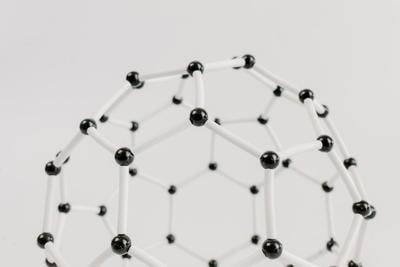
Atomic Absorption Spectroscopy (AAS) is a powerful analytical technique used in various scientific fields to determine the concentration of different elements in a sample.
By exploring AAS's fundamental concepts and methodologies, humans can unlock valuable insights into the elemental composition of samples, leading to groundbreaking discoveries and advancements in science and industry.
Understanding Atomic Absorption Spectroscopy
Atomic Absorption Spectroscopy is based on the absorption of electromagnetic radiation by atoms in the gas phase. The unique electronic structure of different elements causes varying, but specific, wavelengths of light to be absorbed as it passes through the sample of the element of interest. As a result, there is a reduction in transmitted light energy. Since the level of absorption observed in spectroscopy is directly proportional to the concentration of the element, the energy difference is interpreted to determine the sample's concentration.
Instrumentation in Atomic Absorption Spectroscopy
A typical AAS instrument consists of several key components. First is the sample introduction system which facilitates the transport of the sample into the atomizer, which converts the sample into atoms or ions in the gas phase.
This atomized sample then passes through the flame or graphite furnace, where atomization and excitation occur. The radiation source, commonly a hollow cathode lamp, emits light at the analyzed element's known resonance wavelength.
Additionally, the monochromator or the wavelength selector allows only the desired wavelength to pass through to the detector. The detector quantifies the absorbed radiation, providing a measure of the element's concentration in the sample.
Modern AAS instruments utilize various technological advancements, such as flame, furnace, and hydride generation AAS, to cater to different analytical requirements.
Methodology and Applications of Atomic Absorption Spectroscopy
The methodology involves calibration curves, where standard solutions of known concentrations establish a linear relationship between the absorbance and the analyte concentration. An unknown sample's absorbance can then be compared to the established relationship and its concentration found. To ensure accurate measurements throughout this process and eliminate interferences, sample preparation is crucial.
If done correctly, AAS is a powerful tool and has extensive applications in diverse scientific disciplines. For instance, Agilent atomic absorption spectroscopy is used in environmental, pharmaceutical, forensic, metallurgy, and food analysis.
Environmental scientists rely on AAS to monitor heavy metal contamination in soil, water, and air samples. In the pharmaceutical industry, AAS helps ensure quality control and determine trace metal impurities in drug formulations. Forensic laboratories employ AAS to analyze samples for toxic elements, while metallurgists employ the technique to assess the purity of metals and alloys. In the food industry, AAS aids in determining nutritional content and detecting contaminants in food samples.
The Importance of Atomic Absorption Spectroscopy in Today's World
In today's world, atomic absorption spectroscopy plays a crucial role in addressing various challenges and advancing scientific knowledge. Here are a few reasons why AAS is important:
Environmental Monitoring
AAS enables accurate detection and quantification of trace elements in environmental samples. This information is crucial for assessing pollution levels, identifying potential health risks, and formulating effective environmental policies.
Quality Control in Industry
It helps ensure the quality and safety of products by detecting and measuring trace elements and contaminants, facilitating compliance with regulatory standards.
Health and Safety
Contributes to public health by enabling the analysis of biological samples for essential and toxic elements. This helps diagnose deficiencies or toxic exposures and facilitates appropriate interventions and treatments.
Metallurgy and Materials Science
Plays a vital role in metallurgical analysis, allowing for determining the elemental composition and impurity levels in metals and alloys. This information is crucial for quality control, material development, and ensuring the integrity of structural components.
Forensic Analysis
AAS assists forensic scientists in analyzing samples for toxic elements or identifying elements that may serve as forensic markers. It aids in criminal investigations, providing valuable evidence in cases involving poisoning, environmental crimes, or material analysis.
Research and Development
It aids in exploring new materials, understanding elemental interactions, and studying the behavior of trace elements in different systems. This knowledge contributes to advancements in fields such as chemistry, biology, geology, and environmental science.
Emerging Analytical Challenges
As new environmental contaminants, industrial processes, and materials emerge, AAS continues to evolve to meet the analytical challenges of the modern world. Researchers and instrument manufacturers constantly work together to enhance sensitivity, reduce interferences, and improve the overall performance of AAS.
For A New Discovery
Atomic Absorption Spectroscopy is an indispensable technique in today's world, playing a vital role in addressing analytical challenges and advancing scientific knowledge. From environmental monitoring and quality control to health and safety applications, AAS enables accurate and reliable determination of elemental concentrations in diverse samples.


(0) comments
We welcome your comments
Log In
Post a comment as Guest
Keep it Clean. Please avoid obscene, vulgar, lewd, racist or sexually-oriented language.
PLEASE TURN OFF YOUR CAPS LOCK.
Don't Threaten. Threats of harming another person will not be tolerated.
Be Truthful. Don't knowingly lie about anyone or anything.
Be Nice. No racism, sexism or any sort of -ism that is degrading to another person.
Be Proactive. Use the 'Report' link on each comment to let us know of abusive posts.
Share with Us. We'd love to hear eyewitness accounts, the history behind an article.